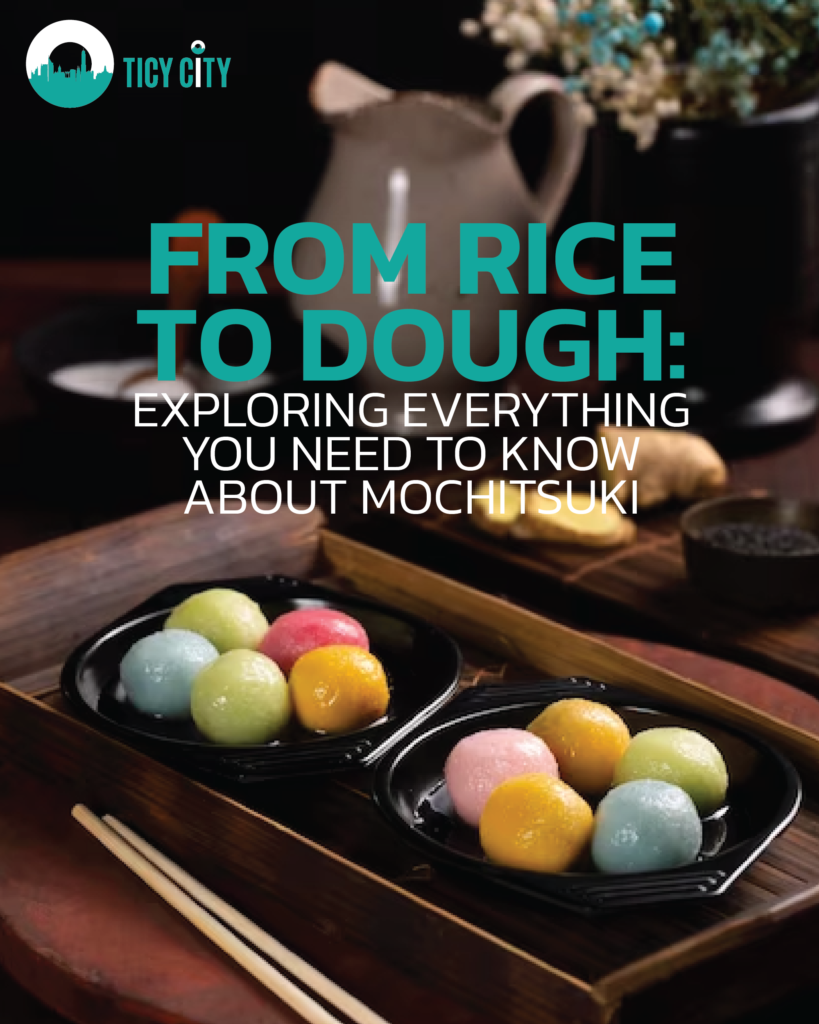
Let’s Discover the Rich Tradition of “Mochitsuki”
In Japan, from October to New Year’s, people team up to harvest rice. After processing the rice from the fields, they follow a tradition called “Mochitsuki”, where they spend a few days pounding freshly harvested rice. This pounding transforms the rice into a soft and flexible dough, used to create tasty treats for the holiday season, both sweet and savory.
The New Year in Japan involves special traditions, with one significant activity being the mochi consumption ritual. Mochi, seen as a sacred and lucky food, is believed to be a divine offering from the gods. During New Year’s, the Japanese take part in Mochitsuki, a ceremony where they collectively pound glutinous rice into a soft texture using wooden mortars and large pestles. The resulting mochi becomes the base for various treats, symbolizing the joy of sharing. Some portions of the mochi even decorate homes for added blessings.
“Mochi” is the soft dough made from glutinous rice, known as mochigome. Commonly called “sticky rice” or “sweet rice,” mochigome has more gluten, giving the dough its elastic and bouncy texture. Before production, the rice is rinsed and soaked overnight to soften. In the morning, the soaked rice is steamed in square baskets called seiro, stacked over hot water. Once thoroughly steamed, the rice is placed in a large mortar called an usu, made of wood, stone, or concrete. Teams of 2 or 3 people then pound the rice with a wooden mallet called a kine, while another person adds water and turns over the dough. They continue until the grains are no longer visible, and the dough becomes smooth and shiny.
After the rice is thoroughly steamed, it goes into a large mortar known as an “usu,” crafted from wood, stone, or concrete. Here’s where the real effort kicks in. Teams of 2 or 3 people take turns pounding the rice with a wooden mallet called a “kine,” while someone else slowly adds water and turns the dough. They continue this process until the grains vanish, and the dough becomes smooth and shiny.
To avoid multiple mallets hitting the dough, they use verbal cues, often as simple as “one, two, three!” Though pounding with the mallet requires hard work, it’s also a lot of fun. It’s a common practice to let everyone, including smaller children.
After getting the dough just right, it’s covered with mochiko (sweet rice powder) to make it easier to handle. Then, it’s shaped into bite-sized pieces. Once the mochi cools, you can enjoy it right away with various flavors, let it dry for later use in Ozoni New Year’s soup, or store it in sealed plastic bags and freeze for up to 6 months!
Hotel Nikko Bangkok played host to a festive New Year Mochitsuki event, cultivating a joyous atmosphere filled with exciting activities for all ages. Guests, both young and old, were welcomed to partake in the lively mochitsuki festival held at the hotel.
Hotel Nikko Bangkok, the Japanese chain luxury hotel located in the heart of Thonglor, a central business district in Bangkok, offers convenience in the trendy neighborhood with diverse dining and entertainment. The hotel is a 2-minute walk from Thonglor BTS Skytrain station, providing easy city access. The 301-room hotel spans 22 above-ground and 4 basement floors, featuring Japanese and all-day dining (The Oasis), an executive lounge, a 735-square-meter ballroom, meeting facilities, a fitness center, and an outdoor pool. Enjoy the vibrant surroundings and convenience at Hotel Nikko Bangkok, just 24 kilometers from Suvarnabhumi International Airport.
For more information call: 02-080 2111 or email: info@nikkobangkok.com Facebook: Hotel Nikko Bangkok
#TicyCity #ตีซี้ซิตี้ #City #HotelNikkoBangkok #Mochitsuki #Festival